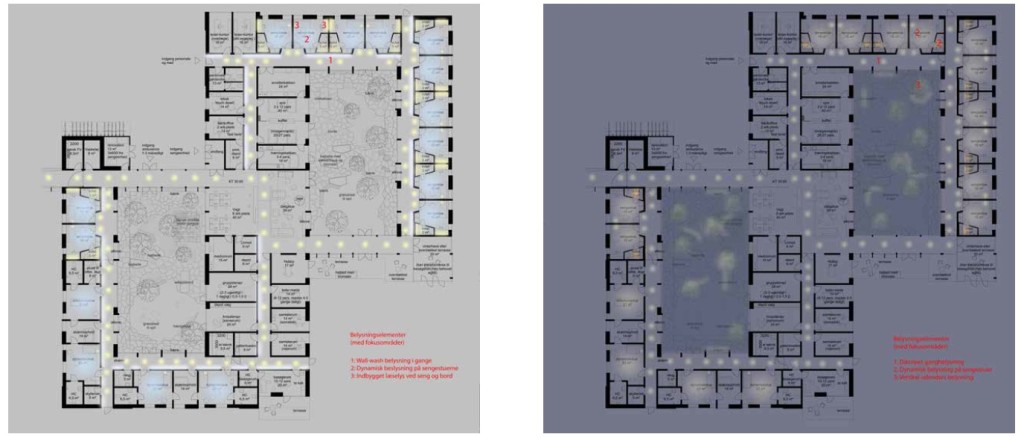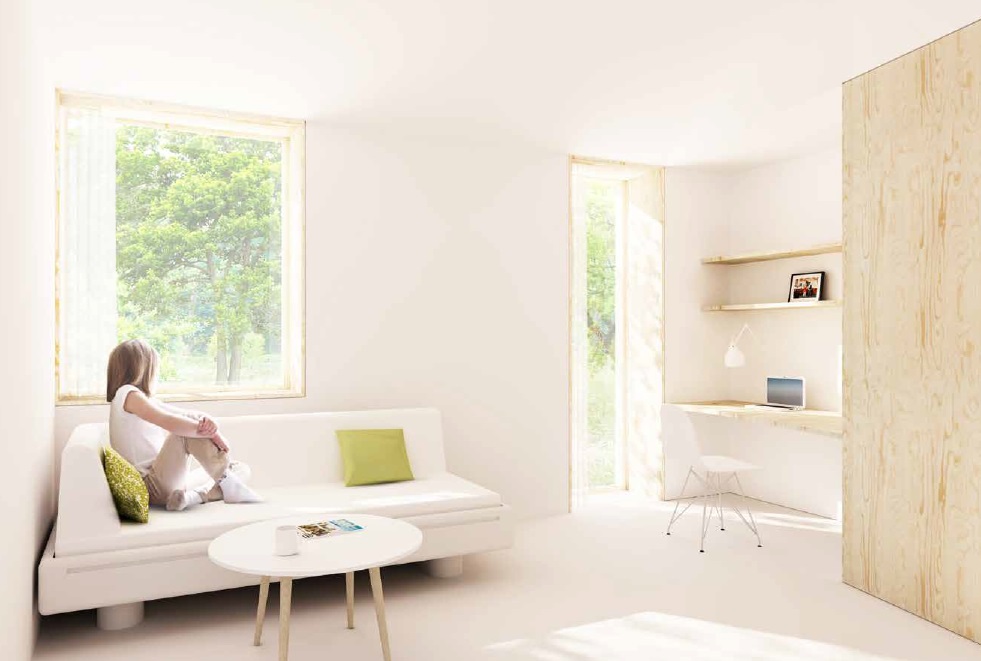The effects of artificial lighting on symptoms of eating disorder – a pilot study
What was the purpose of the project?
The objective of this pilot study is to explore if and how artificial lighting affects symptoms of eating disorders (ED). If an influence of artificial lighting on symptoms of eating disorders is indicated, the study will provide information on how to improve light exposure to ED patients in psychiatric treatment units.
In addition, the outcomes may help identify a better system for measurement and adjustment of the specific light variables of colour temperature and light intensity.
Chosen solution
All lighting in wards, common rooms (eating and recreation rooms) are equipped with programmable Circadian Rhythm Lighting (CRL), with manual override to enable normal on/off lighting.
Hypothesis 1: Artificial lighting adjusted to circadian rhythms will improve well-being in patients with eating disorders
Hypothesis 2: Exposure to high CCT/high LUX intensity will reduce affective symptoms in patients with eating disorders.
The study will use lighting variables of both colour temperature as well as light intensity.
Collaborating partners
Clinical trial investigator: Jan Magnus Sjögren, MD, PhD, Associate Professor, Capital Region of Denmark’s department of Psychiatry and Copenhagen University
Anthropological trial investigator: Michael Mullins, MAA, PhD, Associate Professor, Aalborg University. Co‐investigator: Georgios Triantafyllidis, PhD, Associate Professor, Aalborg University
Following private companies are participating in the installation of equipment:
- Zumtobel group
- 2Ctrl aps
- SIF Gruppen as
Following private consulting firms have been involved in consultancy works during the project:
- Rubow arkitekter
- Sweco Danmark as
- Norconsult Danmark as
Technical specifications
Tunable white LED lighting positioned in eating and recreation areas (2700K – 6500K; 5lux – 1000lux; Min 85RA)
Measurable effects
To be analyzed summer/autumn 2018
Lessons learnt?
More time is needed.
More funds are needed.
Date of opening: 15.03.2018
Visiting info
Psykiatrisk center Ballerup, Sengeafsnit for spiseforstyrrelser, Maglevænget 2, 2750 Ballerup
Other (links, media appearances (TV, Newspapers, etc.)
https://www.psykiatri-regionh.dk/centre-og-social-tilbud/Psykiatriske-centre/Psykiatrisk%20Center%20Ballerup/Sider/Kan-intelligent-belysning-supplere-behandlingen-af-spiseforstyrrelser.aspx
The future
As this is a pilot study and the implementation period is ongoing, the conclusions on “The future” have not been finalized.
Contact info
Email: Jais.elvekjaer@regionh.dk Phone: +4520534797
Patient room (by Rubow, Wessberg & Bogl)
 Plan bed unit / dynamic lighting concept – daytime Plan bed unit / dynamic lighting concept – nighttime
Plan bed unit / dynamic lighting concept – daytime Plan bed unit / dynamic lighting concept – nighttime
(by Rubow, Wessberg & Bogl)




